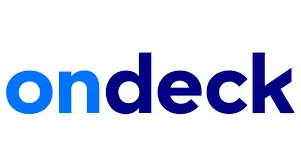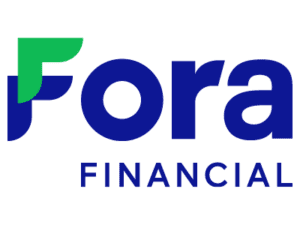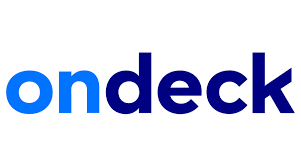Best Alternative Lending Options
If you’re struggling to get a small business loan from a traditional bank or credit union, alternative lending might help you secure the capital you need. Nonbank and online lenders typically have simpler applications, more flexible requirements and faster funding times.
Despite the benefits, alternative business loans have some downfalls, including higher costs and unfavorable repayment terms. It’s important to weigh the pros and cons before pursuing alternative financing for your business.
Compare alternative lenders for small business loans
| Lender | Best for | Loan amount | Interest rate | Time to funding | Min. requirements | |
|---|---|---|---|---|---|---|
 | Bad credit business loans | $1,500,000 | Factor rates from 1.10 to 1.40 | 72 hours | - 570 credit score - 6 months in business - $12,000 monthly gross sales | See Personalized Results |
 | Business line of credit | $250,000 | Starting at 6.20% | 1 to 3 business days | - 625 credit score - 6 months in business - $10,000 monthly revenue | See Personalized Results |
 | Short-term loans | $250,000 | Starting at 27.30% | As soon as the same day | - 625 credit score - 12 months in business - $100,000 annual revenue | See Personalized Results |
 | Quick approvals | $150,000 | - 4.66% for 12-week term - 8.99% for 24-week term | Next business day | - 600 credit score - 6 months in business - $100,000 annual revenue | See Personalized Results |
 | Equipment financing | $2,000,000 | Starting at 4.99% | 4 to 24 hours | - 550 credit score - Less than 2 years in business - No revenue restrictions | See Personalized Results |

Fora Financial: Best for bad credit
| Max. amount | $1,500,000 |
| Term length | Up to 18 months |
| Est. interest rate | Factor rates from 1.10 to 1.40 |
| Min. requirements |
|
| Time to funding | 72 hours |
Early payoff discounts
Can’t have any open or dismissed bankruptcies from the past 12 months
Charges a factor rate, making it hard to compare with competitive interest rates
A working capital loan from Fora Financial provides up to $1,500,000 of flexible funds that can be used for any business purpose. Furthermore, it’s one of our top choices for a bad credit business loan since you only need a FICO Score of 570 to qualify. However, you must have a reliable monthly income of at least $12,000.
Read our Fora Financial review
Bluevine: Best for a business line of credit
| Max. amount | $250,000 |
| Term length | 6 to 12 months |
| Est. interest rate | Starting at 6.20% |
| Min. requirements |
|
| Time to funding | 1 to 3 business days |
Flexible funds that can be used for various business purchases
Not available in South Dakota, North Dakota or Nevada
A personal credit score of 625+ is required
If your business needs occasional access to revolving funds, a business line of credit might be the loan for you. Bluevine doesn’t charge fees for opening, maintaining or paying off your line of credit. Additionally, you only pay interest on the funds you withdraw.
Read our Bluevine review
OnDeck: Best for short-term loans
| Max. amount | $250,000 |
| Term length | Up to 24 months |
| Est. interest rate | Starting at 27.30% |
| Min. requirements |
|
| Time to funding | As soon as the same day |
Prepayment and loyalty discounts
Not available in South Dakota, North Dakota or Nevada
High interest rates
OnDeck is our top pick for a short-term business loan because it offers up to $250,000 with potential same-day funding and discounts if you repay the loan early. Additionally, you can receive further benefits if you’re a current OnDeck customer. However, it doesn’t fund all industries.
Read our OnDeck review
Fundbox: Best for quick approvals
| Max. amount | $150,000 |
| Term length | 12 to 24 weeks |
| Est. interest rate | 4.66% for 12-week term 8.99% for 24-week term |
| Min. requirements |
|
| Time to funding | Next business day |
No hidden fees
Short terms with weekly payments
Might require a personal guarantee
Fundbox offers one of the quickest approval times — you can expect to receive a decision within minutes. Once approved, you can transfer funds from a business line of credit to your business bank account within a business day or two. A significant downside is that the max repayment term is limited to 24 weeks. If you envision needing a longer repayment term, it’s worth considering a different lender.
Read our Fundbox review
Taycor Financial: Best for equipment financing
| Max. amount | $2,000,000 |
| Term length | 12 to 84 months |
| Est. interest rate | Starting at 4.99% |
| Min. requirements |
|
| Time to funding | 4 to 24 hours |
Large funding amounts
Might require a personal guarantee
Includes a document fee (amount not disclosed)
An equipment loan from Taycor Financial can help cover various business expenses, such as computers, printers, vehicles, restaurant appliances and more. With up to $2,000,000 in funds, you can grow and expand your business to new levels. You can choose from flexible repayment options, such as deferred or semiannual payments.
Read our Taycor Financial review
Types of alternative lending for small businesses
Here are the most common types of loans offered by alternative lenders.
Term loan
Term loans are lump sums used for medium to large business expenses, such as purchasing new equipment or remodeling a building. Online lenders typically offer funding from $5,000 to $500,000 or more. Interest rates vary, but once determined, your monthly payments should remain the same. You can choose between a short-term (three to 18 months) or long-term loan (three to 10 years), depending on your business’s level of need.
Line of credit
Similar to a credit card, a line of credit offers access to revolving funds where you can borrow up to a certain amount. Funds can be used for any business-related expense, and you’re only responsible for paying back what you withdraw, plus interest. Credit limits can range from $1,000 to $250,000 or higher. The credit line is replenished after each payment until the withdrawal period ends.
Equipment financing
Equipment financing can fund assets like manufacturing equipment, computers, vehicles or other large machinery needed for your business. Lenders will use the equipment as business collateral if you default on the loan. You can expect to receive up to 80% financing, with limits going up to $1 million and beyond.
Merchant cash advance
A merchant cash advance (MCA) is an alternative form of business financing where a small business receives money up front in exchange for a percentage of the business’s future income, typically in the form of credit card transactions. Funding amounts generally range from $250,000 to $500,000. Note that MCAs usually come with factor rates instead of standard interest rates.
Invoice factoring
A business may sell its unpaid invoices to a factoring company in exchange for money up front, typically up to 60% to 97% of the total value of the invoices. In turn, the company collects money from the customer, taking a small fee before passing the remaining funds onto the business owner. Invoice factoring is often confused with invoice financing, which involves taking out a loan against the invoices.
Alternative lending: Pros and cons
Alternative financing can help many businesses access funds when traditional banks aren’t an option. Despite this, it’s not necessarily the best choice for everyone. Here are the key benefits and disadvantages to help you determine if alternative lending is right for you:
| Pros | Cons |
|---|---|
Higher approval rates Quick and easy application process Fast funding | Higher interest rates Lack of transparency Less flexible terms |
If you have bad credit or a relatively new business, remember that alternative lenders typically have lower credit score, revenue and time-in-business requirements when compared to traditional lenders. Along with the fast application process, alternative loans also boast quicker funding times. Some lenders, like OnDeck, even offer same-day funding.
Just be aware that though individual rates vary across the lending industry, nontraditional loans typically carry higher interest rates than conventional banks. For example, the current average APR for traditional loans is 3.00% to 7.00%, whereas alternative lenders range from 11.00% to 44.00% (or higher). Also, certain alternative lenders lack transparency regarding interest rates and fees, not disclosing pertinent information until you’ve gone through the entire application process.
Lastly, alternative loans often come with unfavorable repayment terms. For instance, you might need to make daily or weekly payments instead of a more traditional monthly repayment schedule.
What is alternative lending?
Alternative lending refers to loans, lines of credit and other financing offered by companies outside the traditional banking world. Often referred to as online lending or fintech lending, this type of financing usually operates solely through online platforms.
Nonbank lenders might raise their own capital and lend to small businesses directly, or they help connect borrowers with investors. Certain retailers, like Amazon or Square, offer loans to their merchants.
Traditional banks vs. alternative lenders
Traditional banks and alternative lenders offer a range of small business loans, although their processes differ in several ways.
Eligibility requirements
Traditional banks often view small businesses as risky investments. As a result, they impose stricter eligibility requirements for business loans, such as expecting excellent credit scores (personal and business), high annual revenue and several years of successfully running your business.
Furthermore, large banks don’t typically borrow small amounts, with the average business loan amount in Q4 2021 a little more than $52,000. In contrast, alternative business funding generally has more lenient requirements, making it a more accessible choice for recently established businesses or those with bad credit.
Time to funding
Borrowing from conventional banks can take multiple weeks since they must thoroughly scrutinize your paperwork and business plan.
However, alternative lenders utilize the latest underwriting technology, allowing them to approve or deny an application within minutes.
Loan products
Most conventional financial institutions offer multiple types of business loans, including:
- Term loans
- Business lines of credit
- Working capital loans
- Equipment financing
Online lenders offer the above products, plus invoice factoring and merchant cash advances (MCAs). We’ll discuss the differences between these loan products later.
Support
Traditional lenders usually have brick-and-mortar branches, allowing you to receive in-person support.
Similarly, many alternative lenders provide a dedicated loan advisor to help you achieve your business goals. Just know that your communications will be limited to phone, video and email since alternative finance companies typically don’t have physical branches.
When to pursue alternative lending
Alternative business funding became a more viable option after the 2008 financial crisis because many banks stopped offering small business loans. As a result, online lenders stepped forward to fill the gap, providing much-needed assistance to small business owners.
Although traditional financing usually offers more attractive rates, especially U.S. Small Business Administration (SBA) loans, the strict requirements exclude many small and new businesses.
You might want to consider an alternative business loan if you:
- Have a reliable source of monthly revenue
- Have been running your business for at least six months
- Have a low or bad credit score
- Need access to immediate funds
- Were recently denied funding through a traditional bank
- Are capable of making weekly repayments
- Need a smaller loan amount
Example
John opened a print shop eight months ago. Business has recently increased, and John wants to invest in another printer to meet this new demand. However, his business’s monthly cash flow is only $6,000, and his personal credit score is 565, making him ineligible for most small business financing solutions.
John researches and compares options for an equipment loan with an online lender. Luckily, Taycor Financial offers equipment financing to those with low credit scores (550 or higher) who have been in business for less than two years. Furthermore, it doesn’t have a minimum monthly revenue requirement. John applies and receives funds within 24 hours, allowing him to purchase his new printer.
How we chose our picks for the best alternative lenders
The best alternative finance company for your business depends on a variety of factors, including your personal credit score, the amount of money you need and how quickly you need funds.
In addition to being nonbank lenders, the options we chose had to meet the following criteria:
- No more than one year in business required
- FICO Score of 500 or higher
- Funding available in one to three business days
- No prepayment penalties
Frequently asked questions
Alternative lenders are private companies that provide various loan products to businesses of all sizes. They aim to create a quick, online application process accessible to all small business owners, unlike traditional banks, which may require you to apply at a physical branch, have longer wait times and have more stringent eligibility requirements.
Nonbank funds come from the lender’s own capital, other investors or peer-to-peer funding. Since these nontraditional lenders loan to riskier businesses, they tend to have higher interest rates and shorter repayment terms.
You can follow our guide on how to get a business loan. The basic steps include:
- Determine how much you need to borrow
- Review the eligibility requirements
- Gather the required documents
- Apply online (it’s OK to apply for multiple lenders at the same time)
- Compare rates and read the small print
- Sign the dotted line and receive funds within a few days
If you’re unable to secure funding with traditional bank loans or an alternative lender, you can consider using a crowdfunding platform like GoFundMe or Kickstarter to jump-start your business fundraising. You’ll have to rally your friends, family and strangers to pitch in, but it’s worth the effort if you need capital to grow your business.
Peer-to-peer lending is another alternative financing option where individuals pool funds toward a business’s specific goal or project. Requirements vary but are often less stringent than traditional and nonbank lenders (although the loan amounts tend to be much smaller).
You can also apply for small business grants, including grants for minority owners and women-owned businesses. In addition, a business credit card can help cover small expenses while helping build your credit. However, aim to pay off the monthly balance to avoid incurring high interest charges.
Overall, alternative lenders are reputable, reliable and trustworthy, making them a solid choice for small business financing. However, certain alternative lenders prey on those in desperate need of funds and participate in sketchy tactics, such as advertising loan products they don’t offer. Furthermore, they might list attractive interest rates on their website even though their rates are much higher.
Avoid falling for a subpar online lender by reading online reviews at the Better Business Bureau and Trustpilot. If in doubt, call the company’s customer service department to better understand its integrity and standards. And most importantly, read the fine print before agreeing to the loan’s terms and conditions.


